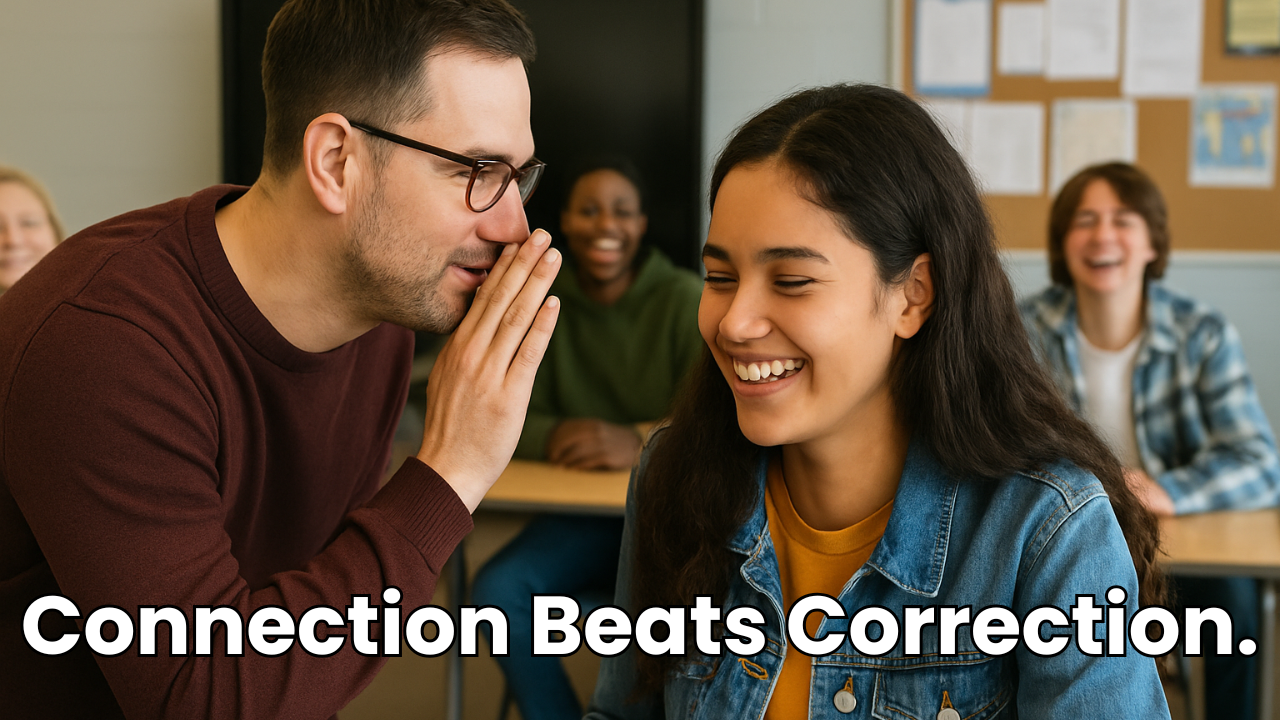
As language teachers, we've got a crucial role to play in helping our students develop real-world language skills.
It's not just about memorizing vocabulary and grammar rules; it's about getting our students to actually use the language in authentic contexts.
And you know what?
One of the most powerful tools we have in our arsenal is conversation.
That's right, having real, meaningful conversations with our students is the key to unlocking their language potential.
Why Conversations Matter
Let me break it down for you. When we engage our students in conversations, we're not just teaching them how to answer simple questions; we're teaching them how to navigate real-life situations using the target language. We're giving them the opportunity to express themselves, share their thoughts and opinions, and connect with others on a deeper level. And that, my friends, is what language learning is all about.
Strategies for Engaging Students in Conversations
So, how do we make this happen in our classrooms?
Here are some concrete strategies you can start implementing today:
1. Go Beyond Simple Questions
Don't just ask your students basic questions and move on to the next person. Take the time to really listen to their answers and follow up with more questions. Show genuine interest in what they have to say. When you do this, you're not only encouraging them to keep talking, but you're also modeling what a real conversation looks like.
2. Tailor Questions to Students' Interests
Get to know your students on a personal level. Find out what they're passionate about, what makes them tick. Then, use that information to craft questions that will really engage them. If you have a student who loves soccer, ask them about their favorite team or player. If you have a student who's into music, ask them about the last concert they attended. When you show that you care about their interests, they'll be more likely to open up and participate in the conversation.
3. Throw in Some Weird and Unusual Questions
Keep your students on their toes by asking some off-the-wall questions every now and then. Instead of the typical "What did you do this weekend?" try something like "If you could have any superpower, what would it be and why?" or "If you were stranded on a deserted island, what three things would you bring with you?" These types of questions not only make the conversation more interesting, but they also challenge students to think creatively and use language in new ways.
4. Use Conversations to Teach Interpersonal Language
Conversations aren't just about exchanging information; they're also about building relationships and navigating social situations. Use your conversations with students as an opportunity to teach them how to use interpersonal language in real life. Teach them how to agree and disagree politely, how to express empathy and support, how to make suggestions and give advice. These are the types of language skills that will serve them well beyond the classroom.
5. Encourage Students to Take the Lead
Don't be afraid to let your students take the reins in the conversation. Encourage them to ask you questions, to share their own stories and experiences. When students feel like they have a voice in the conversation, they're more likely to stay engaged and motivated.
The Benefits of Using Conversations to Teach Language
When we make conversations a central part of our language teaching, the benefits are endless. Here are just a few:
- Increased Confidence: When students have regular opportunities to practice using the language in real-life situations, they gain confidence in their abilities. They start to see themselves as capable language learners and communicators.
- Improved Fluency: The more students talk, the more fluent they become. Conversations give them the chance to practice using the language in a natural, spontaneous way, which helps them develop fluency over time.
- Enhanced Listening Skills: Conversations aren't just about talking; they're also about listening. When students engage in conversations, they're developing their listening skills, learning to pick up on tone, intonation, and other subtle cues that are essential for effective communication.
- Greater Cultural Understanding: Language and culture are inextricably linked. When we use conversations to explore students' interests, experiences, and perspectives, we're also helping them develop a deeper understanding and appreciation for the target culture.
Bringing It All Together
At the end of the day, using conversations to teach real language is all about creating a classroom environment that feels authentic, engaging, and student-centered. It's about valuing our students as individuals with unique experiences, interests, and goals. And it's about giving them the tools they need to communicate effectively in the real world.
So, what are you waiting for?
Start having those conversations with your students today. Get to know them on a personal level, challenge them with thought-provoking questions, and watch as they grow into confident, capable language learners. Trust me, it's a game-changer.
Key Takeaways
- 🗣️ Conversations are your secret weapon in the language classroom. Use them to create an authentic, engaging learning environment that gets students talking and using real language.
- 🙋♂️ Get to know your students on a personal level. Tailor your questions to their interests and experiences, and show genuine curiosity in their responses. This builds trust and encourages participation.
- 🧠 Use conversations to teach more than just vocabulary and grammar. Focus on interpersonal language skills, like expressing empathy, making suggestions, and navigating social situations. These are the skills that matter in the real world.
- 😲 Don't be afraid to mix things up! Throw in some weird and unusual questions to keep students on their toes and challenge them to think creatively. This makes the learning experience more memorable and engaging.
- 🚀 When you prioritize conversations in your language teaching, the benefits are endless. Students gain confidence, improve fluency, enhance listening skills, and develop a deeper understanding of the target culture. It's a win-win situation!
Have you taken our CI Proficiency Quiz yet?
Find out where you are in your CI journey towards mastery. What are you waiting for?



